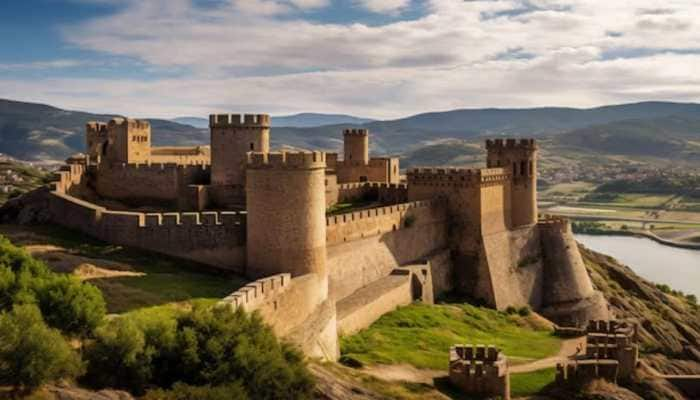Historical Glimpses: Why Vijaynagar Empire Was The ‘Strongest’ Power In The Indian Subcontinent
The Vijaynagar Empire, based in the Deccan region of southern India is one of the strongest and influential dynasties in the history of medieval India. The dynasty ruled from 1336 AD to around 1660 AD and declined mostly because of the massive defeats in wars with Sultans.
Trending Photos
)
The Vijayanagar Empire was considered one of the strongest empires of the Indian subcontinent then, as they defeated all the existing empires of that time. Founded by Harihara 1 and by his brother Bukka Raya 1, the empire had its influence and remained in constant competition and conflict with the five Deccan Sultanates. The Empire is considered to have reached its zenith during the rule of Krishna Deva Raya. Krishna Deva conquered or subjugated territories on the east of the Deccan that belonged previously to Orissa. Many of the greatest architectural monuments are dated to be of his reign. The different aspects of the Vijayanagar Empire which show its strength are:
Geographical location
The empire’s capital Hampi, located on the bank of the Tungabhadra River was one of the main beneficial geographical aspects, as it provided the natural fortification to the capital city and a major source of water. The Tungabhadra River not only provided water but also was a natural barrage for the north Indian Sultanates to directly attack the city. The empire's access to both the Arabian Sea and the Bay of Bengal further blessed its maritime trade, enhancing its economic strength.
Administrative System
The administrative system of the Vijaynagar Empire was further divided into several stages which was a certified way of proper administrative management of social and economic activities. The kingdom was divided into provinces called ‘Rajyas’ or ‘Mandalam,’ each governed by a Nayaka or provincial governor. This decentralized administrative structure allowed local governance to flourish and to maintain overall imperial control. The empire also maintained detailed records and employed an effective bureaucracy, which contributed to its long-term stability and efficient tax collection. This efficient method of tax collection made the empire financially stable and powerful in terms of wealth.
Military Power
The empire maintained a large and well-trained standing army, which included infantry, cavalry, and war elephants. The use of advanced military technology, such as archery and artillery, gave the Vijayanagar forces an edge over their opponents. The empire's military strategy also involved building a network of fortresses, which acted as a defensive wall against invasions, particularly from the Bahmani Sultanate and later the Deccan Sultanates. Realizing the value of cavalry and well-trained archers, Krishna Deva Raya imported many horses from Persia and Arabia.
Diplomatic Alliances
The diplomatic alliances made by the Vijaynagar Empire were one of the key factors behind the empire’s supremacy over other kingdoms. In about 1510, Goa, which had been under the rule of the Sultan of Bijapur, was captured by the Portuguese, possibly with the approval or connivance of Vijayanagara. Commerce between the Portuguese and Vijayanagara became very important to both sides. This shows the important diplomatic ties between the Portuguese and the Vijayanagara Empire. Diplomatic ties followed by strategic alliances with neighbouring kingdoms and engaged in diplomatic marriages to strengthen their position.
The Vijayanagar Empire's status as the strongest power in the Indian subcontinent during its time was a result of strategic geography, robust administration, military prosperity, economic prosperity, cultural patronage, and strong diplomacy. The legacy of Vijayanagar continues to be celebrated in Indian history for its contributions to the culture, governance, and the arts. The ruins of Hampi, a UNESCO World Heritage site, show the timeless architecture, economic prosperity and ultimately their immense strength in the Indian subcontinent in that era.
Stay informed on all the latest news, real-time breaking news updates, and follow all the important headlines in india news and world News on Zee News.
Live Tv







)
)
)
)
)
)
)
)
)
)
